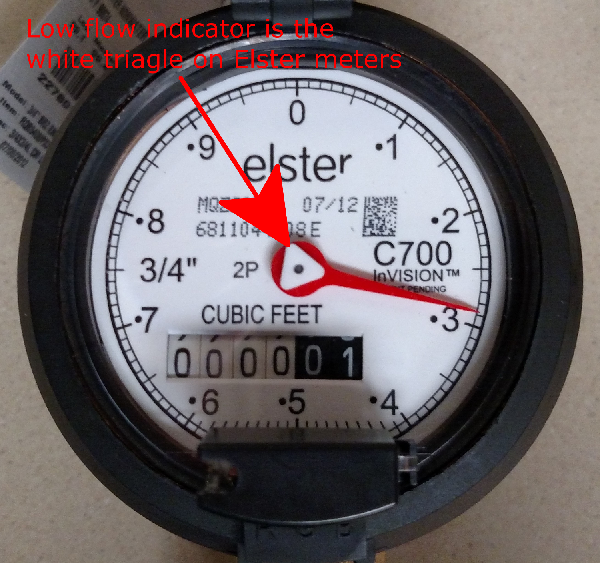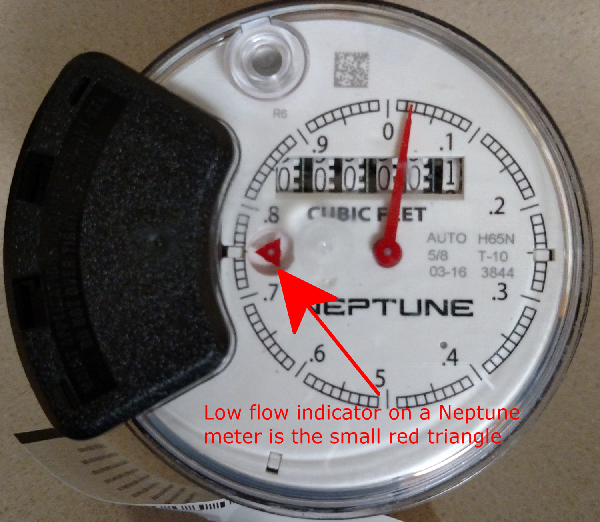Water Conservation
This page contains information about some simple measures water customers can take to reduce water consumption and help conserve the city’s water supply.
Everyday, people turn on their water faucets, or flush their toilets without a second thought. The only time we think about it is if no water comes out of the tap. Do you even know where we get the water we drink? The water, or hydrologic, cycle is the process of how water moves from one state of matter to another. It includes evaporation, condensation and precipitation. For more information, U.S. Geological Survey Water Cycles. All water sources are replenished through the water cycle.
There are two sources of drinking water, surface water or ground water. Surface waters are lakes, ponds, streams or rivers. Groundwater is water taken from aquifers underground with wells. Haverhill is very lucky to have good quality surface water sources to use for our drinking water. If you'd like to learn more about Haverhill's water supply, please visit our water supply webpage.
In Haverhill, an average of 6.0 million gallons a day of treated drinking water is produced. Under the city’s Water Management Act permit it is required to work to achieve and maintain a residential gallons per capita day demand of no more than 65 gal per person per day. This statistic is referred to as RGPCD. Since 2009 Haverhill’s RGPCD has been below the goal of 65. This shows that as a community, Haverhill already is very good at conserving water, but there are still small changes that can be made that will make a big impact.
Why Should You Care?
Your water habits and practices today will affect your water supply in the future. It will ease demand on our present water sources. Also reducing your individual water use today will save water and money for you right now. You are rate-payers, so water conservation will save you money on water rates, wastewater rates and electricity.
Where Does The Water Go?
All water in Haverhill is treated so it is safe to drink, but we actually drink only about 1% of that water. So, where does it all go? The City of Haverhill provides water for residential use, commercial and industrial use, fire protection and agricultural use. As a resident, there are many ways you can reduce how much water you use.

Typically 68% of Haverhill’s water use is residential. In residences, there are two places water is used, indoors and outdoors. A major indoor water waster is leaks. Check the low flow indicator on your water meter. The low flow indicator is typically a small white or red dial on the face of the meter separate of the normal sweep hand. Please refer to the two examples showing the location of the low flow indicators. If it is moving when no water is in use, there is a leak somewhere in your home. These are usually very cheap repairs and will save more in the long run. First, fix any faucets that drip. A faucet that drips one drop per second, wastes 35 gallons a month. The next place to check is the toilet. Put a leak detector tablet or food coloring in the water tank of the toilet. Do not flush. Wait 20 minutes. If any color appears in the tank, there is a leak.

The next biggest water use is the toilet. If it is an old one, it can use 7 gallons per flush. Replacing your toilet with a more efficient 1.6 gallon/flush toilet is the fastest way, but not necessarily, the cheapest way for you to conserve water. There are ways to reduce the amount of water used without having to replace your toilet. Put a bag or plastic bottle full of water in your toilet tank. This will displace up to a gallon of water, thus using less water per flush. Also, DO NOT use your toilet as a trash can.
Small changes add up quickly. If everybody in Haverhill reduces their water use by one gallon a day, it would save over 22,000,000 gallons of water in a year.
How Much Do You Use?
Check out the table below and then estimate how much water you use everyday. These are averages. Use the first column if no water conservation or devices are used. Now start to accumulate real data to calculate how much you really use. If you know where your water meter is, take a reading at the same time for three days. Take an average, and then divide it by the number of people who live in your home.
Water Use Chart
Now put some water saving habits into practice. Below is a list of very easy steps you can talk to conserve water. After a week, check the water meter again and see how much you have reduced your water use.
| Example | Without Conservation |
With Conservation |
| Flush the toilet (per flush) | 3.5 to 7 gallons | 1.6 gallons |
| Run tap two minutes while brushing teeth | 5 gallons | 2 gallons |
| Take a shower (per minute) | 5 gallons | 1.8 gallons |
| Use the dishwasher | 20 gallons | |
| Do a full load of laundry | 50 gallons | |
| Wash the car for 20 minutes, with hose running | 90 gallons | 25 gallons |
| Ignore a slowly leaking faucet for a month | 35 gallons | 0 gallons |
| Ignore a leaking toilet for 1 months | 7500 gallons | 0 gallons |
Tips for Indoor Water Conservation
- Repair leaky faucets, indoors and out.
- Consider replacing old fixtures and appliances (like toilets, dishwashers and laundry machines).
- When cooking, peel and clean vegetables in a large bowl of water instead of under running water.
- Fill your sink or basin when washing and rinsing dishes.
- Only run the dishwasher when it's full.
- When buying a dishwasher, select one with a "light-wash" option.
- Only use the garbage disposal when necessary (composting is a great alternative).
- Install faucet aerators.
- Take short showers instead of baths.
- Turn off the water to brush teeth, shave and soap up in the shower. Fill the sink to shave.
- Repair leaky toilets. Add 12 drops of food coloring into the tank.
- If color appears in the bowl one hour later, your toilet is leaking.
- Install a toilet dam, faucet aerators and low-flow showerheads.
- The Haverhill Water Department has a limited supply of complimentary low flow faucet aerators and shower heads for water customers available at the billing office, room 300 in City Hall.
- Set your toilet tank to stop filling when the water level is at least 1-inch from the top of the overflow pipe.
- Run full loads of laundry.
- When purchasing a new washing machine, buy a water saving model that can be adjusted to the load size.
Tips for Outdoor Water Conservation
- Maximize the use of natural vegetation and establish smaller lawns.
- Use plants and grasses with low water demands.
- Consider planting more trees, shrubs, ground covers, and less grass. Shrubs and ground covers provide greenery for much of the year and usually demand less water.
- Use native plants in flower beds which have adapted to rainfall conditions in New England and often provide good wildlife habitat.
- Cluster plants that require extra care together to minimize time and save water.
- When mowing your lawn, set the mower blades to 2-3 inches high.
- Longer grass shades the soil improving moisture retention, has more leaf surface to take in sunlight, allowing it to grow thicker and develop a deeper root system. This helps grass survive drought, tolerate insect damage and fend off disease.
- Only water your lawn when necessary.
- If you water your lawn and garden, only do it once a week at most if it hasn’t rained.
- When you water, put down no more than 1 inch of water each week. This watering pattern will encourage healthier, deep grass roots.
- Over-watering is wasteful, encourages fungal growth and disease, and results in the growth of shallow, compacted root systems that are more susceptible to drought and foot traffic.
- Water the lawn and garden in the early morning or late in the evening to maximize the amount of water that reaches the plant roots.
- Use soaker hoses to water gardens and flower beds. If sprinklers are used, take care to be sure they don't water walkways and buildings.
- If you have an automatic lawn irrigation system make sure it has rain shut-off capability.
- The Haverhill Water Department requires rain sensors on all new outdoor irrigation systems and strongly encourages older systems to be retrofitted with a rain sensor.
- Apply mulch around shrubs and flowerbeds to reduce evaporation, promote plant growth and control weeds.
- Add compost or an organic matter to soil as necessary, to improve soil conditions and water retention.
- Collect rainfall for irrigation in a rain barrel or screened container (to prevent mosquito larvae growth).
- When washing your car, wet it quickly, and then use a bucket of water to wash the car then turn on the hose to final rinse.
- Consider using a commercial carwash as most recycle their water.
- Always use a broom to clean walkways, driveways, decks and porches, rather than hosing off these areas.
Please see the infographic for actions you can take for a level 3 drought.
Content last updated on November 15, 2024
How to Check for Leaks:
Check your meter. Make sure there is no water running. If the small triangle on the face of the meter is spinning, this could indicate a leak.
Toilets are the most common source of leaks.
Dye tablets are available at City Hall in Room 300. Drop a tablet (or food coloring) in the tank of the toilet. Do Not Flush. If the color runs from the tank to the toilet bowl, this indicates a leak.
Leaky toilets waste water and cost you money!
Contact Us
Haverhill City Hall
4 Summer Street
Haverhill MA, 01830
Monday - Friday 8:00 - 4:00
Call Center 311 (within city limits)
(978) 358-1311 (outside the city)
